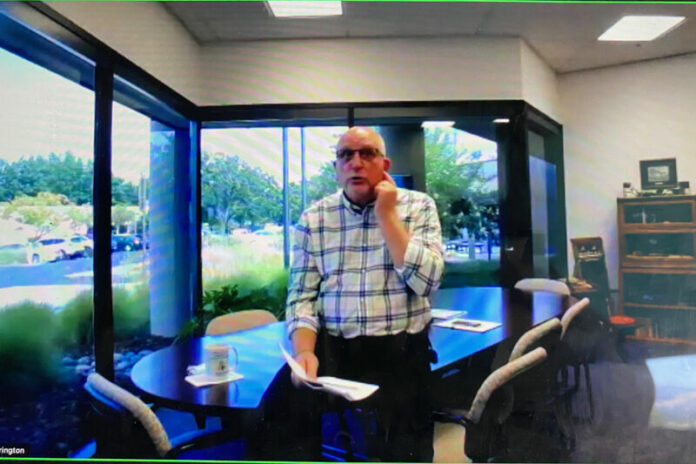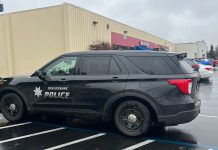
At a pair of webinars July 22 and 23, the Sonoma County Office of education presented the latest information and rulings about schools reopening. The first was presented with a focus on information for families, the second was more focused on administrators and school officials.
The presentations were made by Dr. Steve Herrington, the Sonoma County Superintendent of Schools, with Dr. Sundari Mase briefly presenting at the one on July 22.
Herrington presented the information about the coming school year with the caveat that, though plans are being made, everything is subject to change due to the unknown nature of virus response.
“There are two key California Department of Public Health documents we built this presentation on — the Reopening Framework and Industry Guidance — combined with the county’s roadmap to reopening,” he said
According to Herrington, the state has outlined five key priorities for schools: safe, in-person school based on local health data, mask requirements, physical distancing and other adaptations, regular testing/contact tracing and rigorous distance learning.
The new state restrictions will also apply to all schools, including private and charter schools, not just public schools. There is a waiver process that has been created for elementary schools, which has been codified as Kindergarten through eighth grade (at the first presentation this information had not been clarified from the state yet).
“If a you are a private or charter school, you may open with small cohort, in-person instruction, but you must follow the road map,” Herrington said. “If you are thinking of reopening with a cohort model, please notify SCOE. We will be maintaining a list of those who have applied for waivers.”
According to Herrington, 11 schools have notified SCOE already of their intent to file for a waiver. He also added that he is aware of a school district in southern California that is fighting the governor’s ruling, but that until it gets litigated, a process that will likely out last the pandemic itself, nothing will be decided.
The county must be off the watchlist for 14 days before schools can move to consider hybrid or in-person learning, making Aug. 14 the earliest possible date of reopening. However, Herrington allowed that in a recent conversation with Mase, she declined to commit to the idea that the county would be off the watchlist that quickly.
“She was apprehensively optimistic we might be off watchlist,” he said.
If the county goes back on the watchlist, Herrington said that it will use the state standards from quarantining to determine if a school or class has to be closed.
“This will prevent the yo-yo effect,” Herrington said.
Moving forward, Herrington outlined the way schools will be moving forward if opened for any form of in person learning, including hybrid models.
- Teachers must remain 6 feet distanced from all students and staff at all times.
- Students must remain 6 feet apart from others where practicable.
- All students in third grade and above must wear masks. Students in the lower grades are strongly encouraged, but not required, to wear masks. Students or individuals who are not masked “must be excluded from campus.” Masks can be removed meals, naptimes and outdoor recreation.
- There must be daily symptom checks, including temperature checks, hand washing stations, and daily sanitation and disinfection of facilities and equipment.
- There will also be quarantine protocols in place should a student or staff member test positive.
“If a student in a classroom tests positive, and has spent more than 15 minutes in contact with classmates or a teacher, the entire class will be quarantined and tested. If the student went down a hallway, waived to a student and use the bathroom and came back, anyone passed in the hallway would not be considered exposed. Contacts must be greater than 15 minutes and/or less than six feet,” Herrington said.
Mase said that school districts will be required to have teachers and staff tested periodically, as the county’s testing capacity allows.
“We’ll have more information out on testing as we see how it does. With distance learning, clearly, we’re going to have less potential for there to be cases among students and staff because they’re not together at school,” Mase said.
Once students are able to go back to learning in-person, if a school has COVID-19 cases pop up, the county’s health department will evaluate the situation and perform contact tracing on those who may have come in contact with the infected person.
If there’s one or more confirmed cases in a classroom, Mase said the people in the classroom cohort will be quarantined at home for 14 days while county health follows them to see if there are additional cases. Herrington added that any student on quarantine would still receive instruction.
According to Mase and Herrington, if multiple cohorts —two or more — or more than 5% of the school test positive for the virus, then the school site will close. It is not the local principals’ decision to close.
“The decisions are made in consultation with the health officer; we do not wish to create a panic. Based on the state standards, a district will be closed if 25% of the schools are closed. Then we will wait 24 to 36 hours to send in custodians to clean and disinfect the rooms after exposure,” Herrington said.
Other items of note are that the shipments of state sponsored personal protective equipment have started coming in to SCOE for distribution and that the newly-passed AB1384 will protect public schools from liability in the event of COVID exposure on a school site. (AB 1384 does not protect private schools.)
“We are prepared to start next week (distributing) PPE to districts,” Herrington said. “Cardinal Newman has volunteered to help us out with private schools, so distribution for those in private schools will come from Cardinal Newman. Public get yours through SCOE. If you are a charter, you need your authorizing district to get your supplies.”
He added that districts must pick up their supplies themselves.
“This is going to be a fluid situation — once we come off the watchlist, it’s going to be a fluid situation for everyone,” Herrington said.








